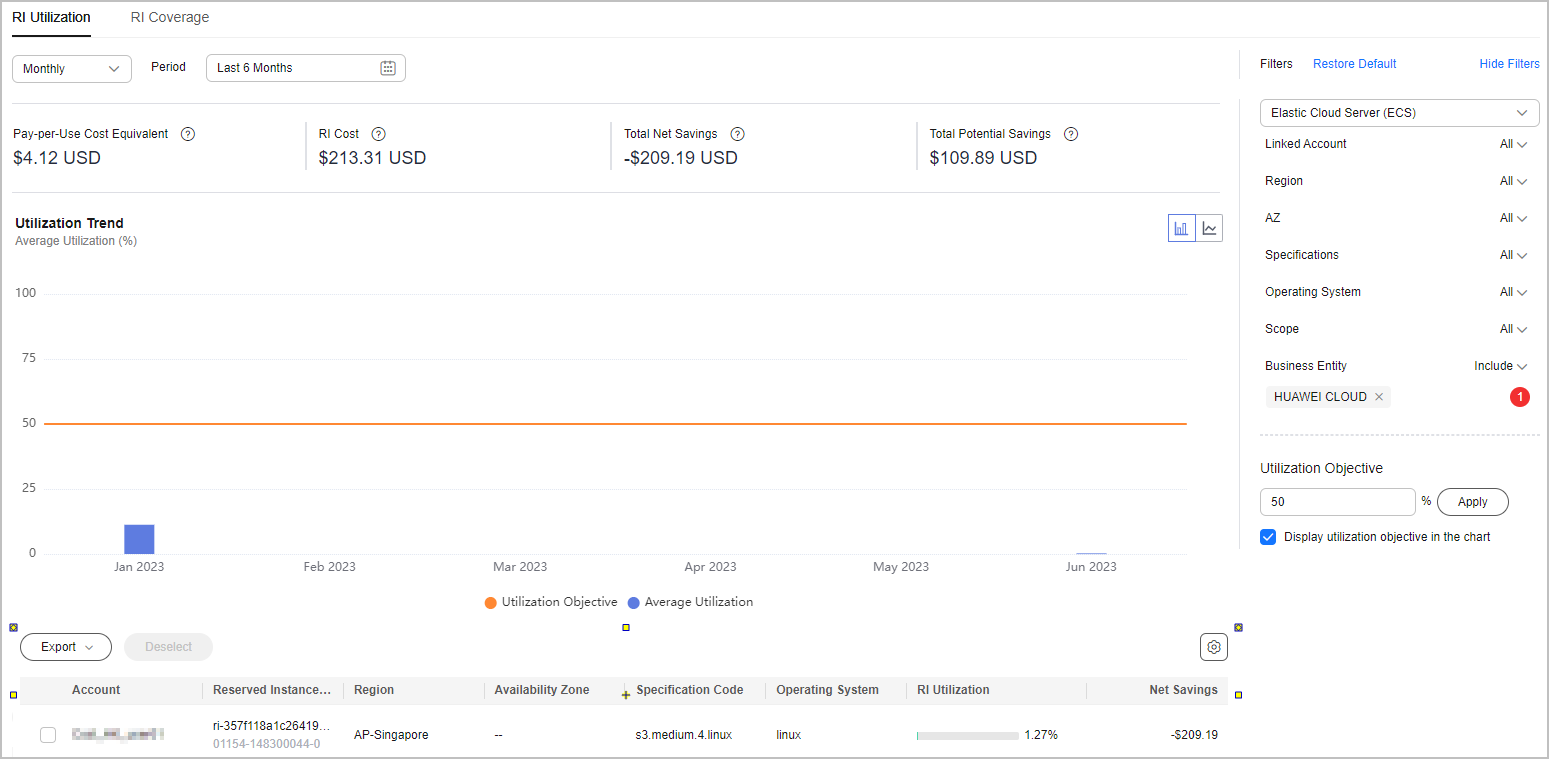Cost Savings and Optimization
Cloud costs are subject to different billing rates and usages. To optimize your cloud costs, these two factors are taken into account accordingly.
Selecting Appropriate Billing Mode
Huawei Cloud provides you with flexible billing modes, such as pay-per-use, yearly/monthly, resource packages, reserved instances (RIs), and Savings Plans. You can choose whichever best suited to your needs. The following describes the application scenario for each billing mode, so you can more easily select the one most likely to help you effectively reduce your expenditures:
- Pay-per-use: If you may only need the cloud resources temporarily or for unplanned, urgent purposes, pay-per-use is a good choice.
- Yearly/monthly: If your demand is stable for as long as a long-term subscription lasts, you can cut costs with a yearly/monthly subscription.
- Resource package: Similar to a yearly/monthly subscription, you can buy a resource package in advance to cover your usage of certain types of resources that you want to use long term.
- RI: An RI is not an actual instance, but a discount that can be applied to the use of pay-per-use instances. When the specifications of your pay-per-use instances match those of an RI, the RI billing benefit automatically applies to your instances.
- Savings Plans: Savings Plans is a flexible billing option that provides significant savings on your pay-per-use Huawei Cloud usage.
Optimizing the Billing Mode in Use
Huawei Cloud provides optimization recommendations on billing modes to help you reduce costs by changing to a more appropriate billing mode while maintaining resource performance.
- Changing pay-per-use to yearly/monthly: Cost Center helps you analyze the usage of your pay-per-use resources (such as ECS, EVS, RDS) and identify places where you can save money by changing the billing mode from pay-per-use to yearly/monthly. For details, see Changing Pay-per-Use to Yearly/Monthly. You are advised to focus on optimization recommendations with high savings (large value for Estimated Monthly Savings) and low risks (small value for Break-Even Time).
Figure 1 Evaluating the optimization option of changing pay-per-use to yearly/monthly

- Analyzing RI utilization and coverage: Cost Center allows you to view the actual utilization or coverage of RIs in a given period so that you can learn the costs optimized by using RIs, and determine whether the RIs are fully used or whether you have purchased enough RIs. For details, see Analyzing RI Utilization and Coverage.
Figure 2 Analyzing RI utilization and coverage

- Purchasing savings plans: Cost Center provides you with custom savings plan recommendations based on your historical pay-per-use expenditures to help you save money.
Figure 3 Savings plan purchase recommendations

- Analyzing savings plans utilization and coverage: Cost Center allows you to learn the costs optimized by using savings plans, and to determine whether the savings plans are fully used or whether you have purchased enough savings plans. For details, see Viewing the Usage of Savings Plans.
Identifying Idle Resources
You can access Optimization Advisor to conduct cost inspection to identify idle resources (examples: ECS, EIP, EVS, and ELB). By doing so, you can obtain cost optimization recommendations.
Feedback
Was this page helpful?
Provide feedbackThank you very much for your feedback. We will continue working to improve the documentation.See the reply and handling status in My Cloud VOC.
For any further questions, feel free to contact us through the chatbot.
Chatbot





